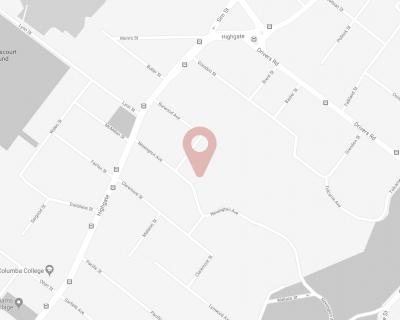Mohs Micrographic Surgery (Mohs Surgery) is the most advanced and precise method for treating skin cancers, achieving cure rates that are higher than any other technique. Mohs surgery was originally invented nearly 70 years ago by Dr Frederick Mohs, at the University of Wisconsin. Since that time, the technique has been modernised and refined to its current form. The key aspect of the Mohs surgery technique is that the specialist Mohs surgeon both removes the skin cancer and examines the microscopic slides in a detailed and meticulous manner.
How is Mohs Surgery Performed?
Mohs surgery is performed on an outpatient basis, under local anesthesia and nerve blocks, in our operating theatres at the Skin Practice. The visible skin lesion is removed using a special technique; particularly, the edge of the specimen is cut at a 45 degree angle to facilitate the subsequent laboratory processing. The specimen is then orientated and a precise map of the cancers location is drawn.
Once the cancer specimen is removed, it is rapidly processed using a unique horizontal sectioning technique to create microscopic slides. The slides are then immediately examined by Dr Ludgate. The Mohs surgery technique and unique slide preparation method allows for 100% of the edges of the specimen (both peripheral and deep) to be accurately examined for any residual cancer cells. By comparison, in a standard surgery specimen, including frozen sections performed at the time of surgery, less than 1% of the edges are routinely examined under the microscope; this greatly increases the chances that residual cancer may not be detected.
With the Mohs technique, if any residual cancer cells are seen, then their precise location is noted on the map, and further tissue is removed in those locations. Mohs surgery targets the tissue containing cancer, maximally saving healthy tissue.
What is the Mohs Micrographic Surgery Process?

Who Performs Mohs Surgery?
Mohs surgery requires specialist training and extensive clinical experience in the removal and pathological examination of skin cancers, as well as reconstructive surgery. There are two common training programs for the Mohs surgery technique; namely, a course offered by the American Society of Mohs Surgery or a comprehensive fellowship accredited by the American College of Mohs Surgery (ACMS).
To obtain the ACMS qualification the surgeon must complete a 1 or 2 year fellowship at an approved centre, during which they personally perform more than 500 Mohs cases. This large number of cases ensures competence with all aspects of the Mohs technique, and the subsequent reconstructive surgery. Most of the scientific research validating the success of Mohs surgery has been performed by ACMS fellowship trained Mohs surgeons, and most major Universities in the United States only hire ACMS fellowship trained Mohs surgeons.
What are the Benefits of Mohs Surgery?
Mohs surgery offers a number of advantages over other skin cancer treatments:
- As Mohs surgery allows 100% of the margin to be examined microscopically, it has the highest possible cure rates (up to 99%) for BCC, SCC, and other skin cancers compared to other forms of surgery, radiation, and other non-surgical treatments.
- Mohs surgery specifically targets the tissue that is involved with skin cancer while saving as much healthy tissue as possible. This results in smaller scars and superior cosmetic results.
- skin cancer surgery, the results are often not available until days after the wound has been repaired, which results in some patients needing to have a further operation if all of the skin cancer was not removed. With Mohs surgery the skin cancer is completely removed before the wound is repaired, avoiding the need for repeat surgery.
- Because of the higher cure rates and subsequent lower number of skin cancers requiring re-treatment in the future, Mohs surgery is cost-effective compared to other skin cancer treatments.
What Cancers are Treated with Mohs Surgery?
Mohs surgery is most commonly used to treat Basal Cell Carcinoma (BCC) and Squamous Cell Carcinoma (SCC) skin cancers, but it may also be used to treat other types of skin cancers and some melanomas.
Not all skin cancers need to be treated with Mohs surgery, but it is particularly useful for:
- Skin cancers in vital or cosmetically sensitive areas such as the face, hands, and fingers
- Skin cancers that are large
- Skin cancers with borders that are ill-defined to the naked eye
- Skin cancers that have returned despite previous treatments or have been incompletely excised skin cancers with aggressive features on the biopsy
- Skin cancers occurring in scar tissue
- Skin cancers occurring in patients who have a high risk of developing multiple future cancers (e.g. organ transplant patients or younger patients)
For skin cancers with the above features, common treatments are often less successful because they rely on the naked eye to determine the extent of the cancer. These methods may remove too little cancer, which can cause it to recur in the future.
Alternatively, they may result in the removal of too much healthy tissue leading to larger scars, loss of function, or fewer options for an aesthetically optimal reconstruction.
Reconstruction Following Mohs Surgery
Following successful removal of the skin cancer, Dr Ludgate will assess the wound and discuss the best reconstruction options with you. Most wounds require some form of reconstructive surgery to achieve the best outcome. Dr Ludgate specialises in advanced reconstructive surgery, particularly for cosmetically sensitive areas such as the nose, ears, or lips.


